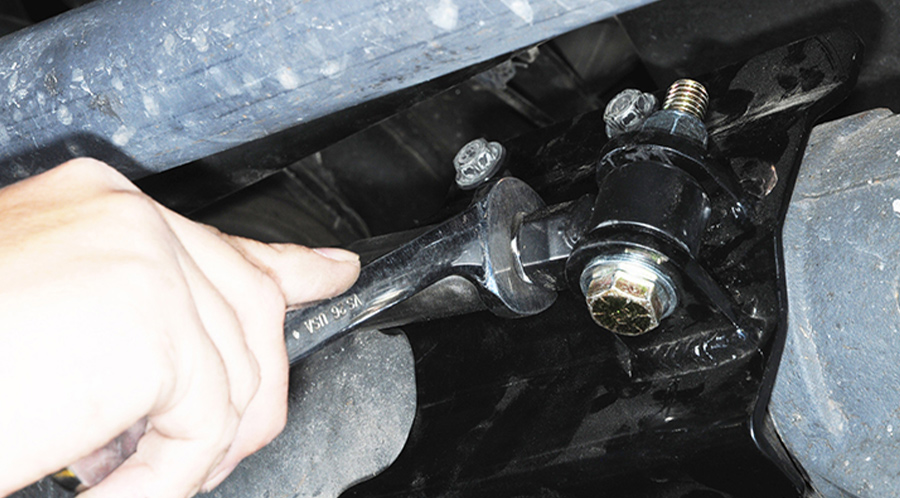
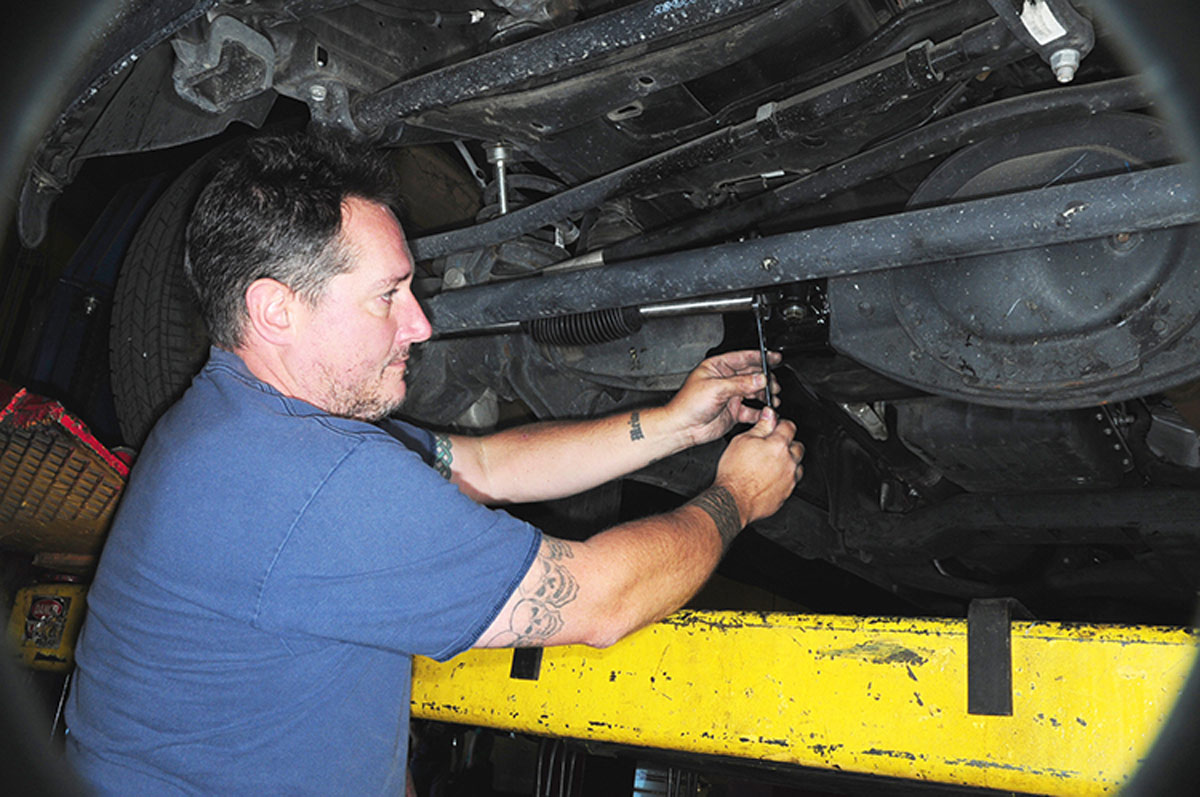

hen it comes to suspension products that improve handling, most aftermarket suppliers love to compare the results to that of driving a sleek little two-seater automobile. You’ve heard or read such claims countless times: “After installing our ‘gizmo,’ your truck will handle like an expensive sports car.” An exaggeration, to be sure. Granted, in most cases upgrading certain suspension components will make a difference — especially to road-weary drivers who find it necessary to continually “fight the wheel” — but you still can’t escape the realities of physics. Tow vehicles will not handle like sports cars because steering is not precise and heavy-duty suspensions are not finely tuned like that of a Lamborghini.
Steering dampers, for example, are supposed to “tighten” steering components somewhat — but in reality, while such stock, shock-absorber-like steering stabilizers may be better than nothing, they can only do so much.
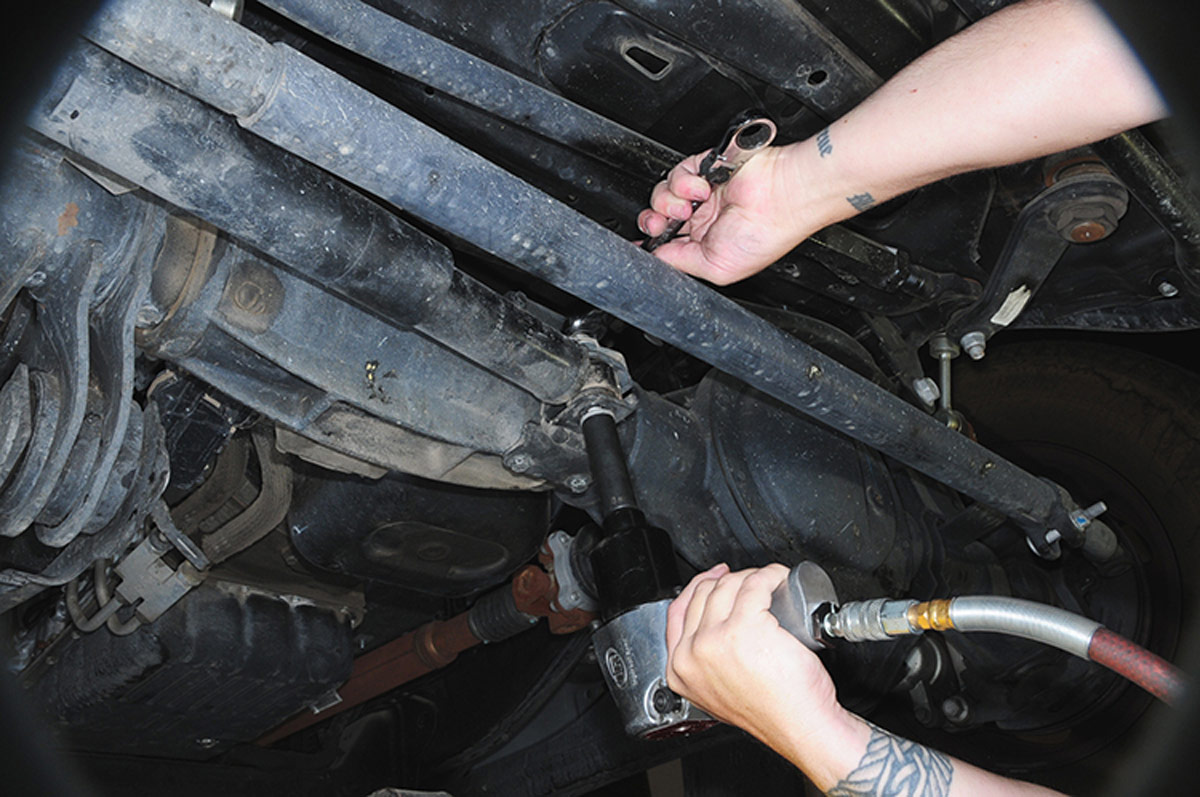
Roadmaster (roadmasterinc.com), a major provider of tow bars and suspension upgrades, responded to the frustrations of Jeep SUV owners who struggled with unwanted harmonic steering oscillations — the well-known “death wobble” — by introducing its Exact Center Steering Stabilizer to not only fix that problem but also improve overall steering response. While the Jeep suspension malady was behind the product’s development, its popularity has led Roadmaster to expand the line to include stabilizers for most Class A motorhomes, Jeeps and 2016-2022 Ram 2500/3500 trucks (kits for Class C motorhomes and other trucks will be released during the next few months). The Exact Center stabilizer has a $580 price tag for full-size trucks and Class A motorhomes; $450 for Jeeps. Brackets sell for $89-149, depending on the vehicle. You can check out applications by going to fitmaster.roadmasterinc.com and perusing the company’s Fitmaster guide.
We tested the Exact Center on a 2016 Ram 3500 4 x 4 dually that is used almost exclusively for towing a big full-profile fifth wheel trailer. Steering precision on this truck was not horrible, but the Ram had a tendency to wander and require more steering input than optimal, a situation that was amplified when towing the fifth wheel. While there was no death wobble to report in the test truck, friends with similar trucks have experienced this phenomenon. Most times, the wobble was initiated while crossing railroad tracks or potholes — and the subsequent loss of control was very disconcerting.
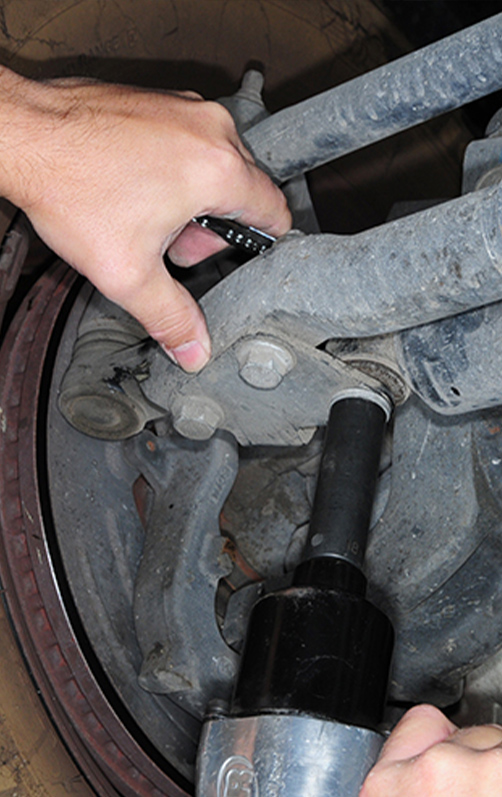
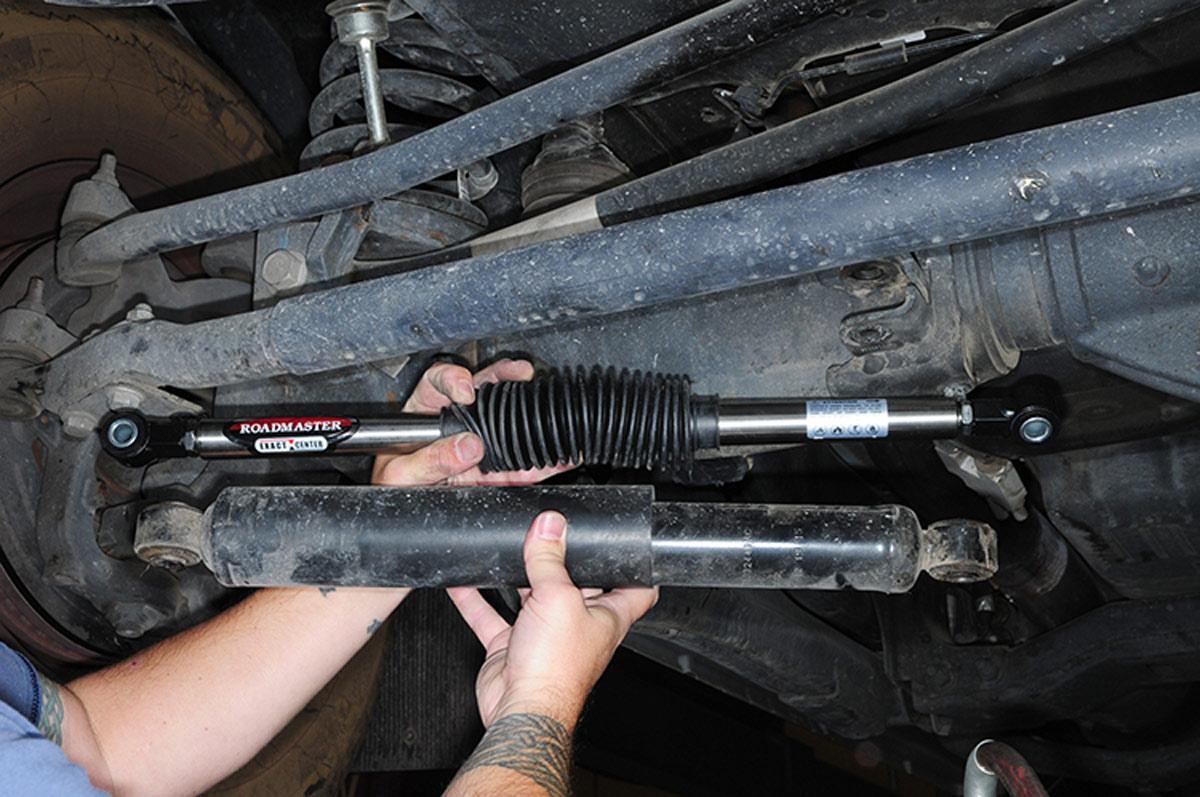
Proactive Rather than Reactive
The aftermarket has seen its share of shock-style products designed to damp steering input and improve handling, but the Exact Center is different. While other products push the linkage back while negotiating turns in an attempt to provide some steering control, this action is typically after the fact; the vehicle has already started to wander at this point and steering play has already been initiated. The Exact Center is proactive, meaning that rather than ramping up slowly the forces necessary to control steering remain pressurized in both directions, which promotes a positive feel and maintains steering precision while driving down the road in a straight line or in turns.
Comparing the OEM shock-style damper to the Exact Center shows a completely opposite approach to steering stabilization. While the factory damper looks like a cheap shock absorber — something vehicle manufacturers are famous for — the Exact Center uses a high-pressure nitrogen gas-charged piston in each of two stainless-steel cylinders connected by a stainless-steel rod and covered with a rubber boot. It not only delivers steering control, but its design meets the criteria of car buffs who like attractive accessories.
Installing the Exact Center stabilizer is not difficult but does require that the front wheels are as straight as possible before starting. It’s best to lift the front axle off the ground for better working space, but the job can be done by sliding your body under the truck — just make sure to use jack stands if the front is lifted, and always use chocks.
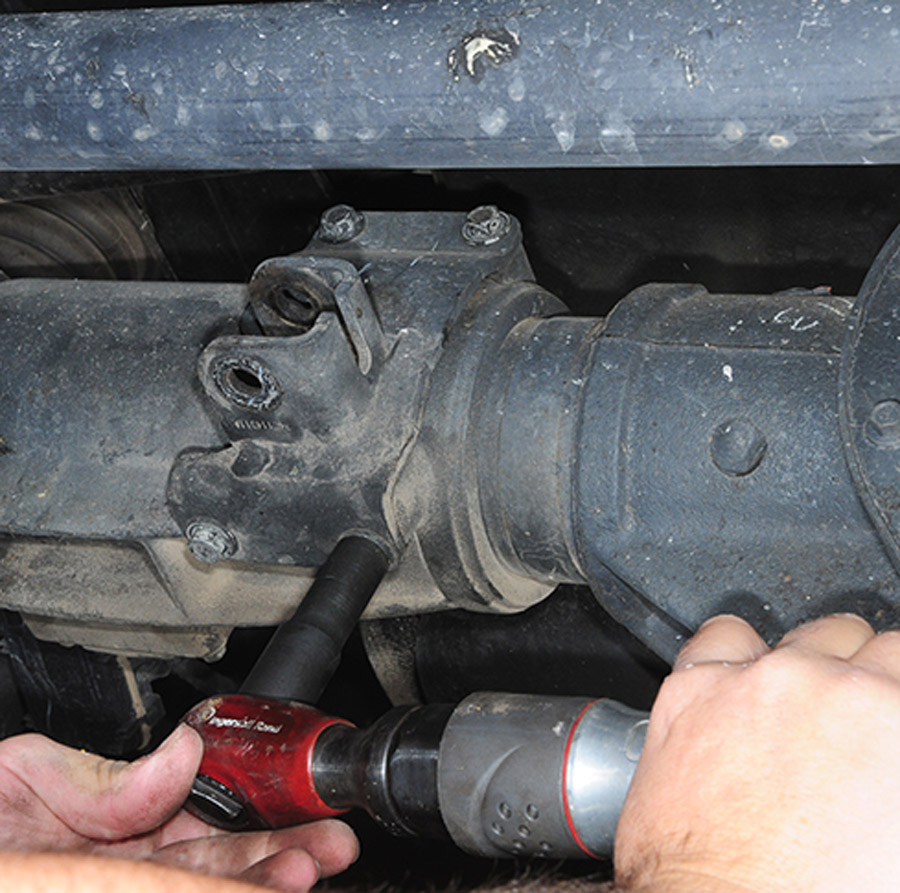
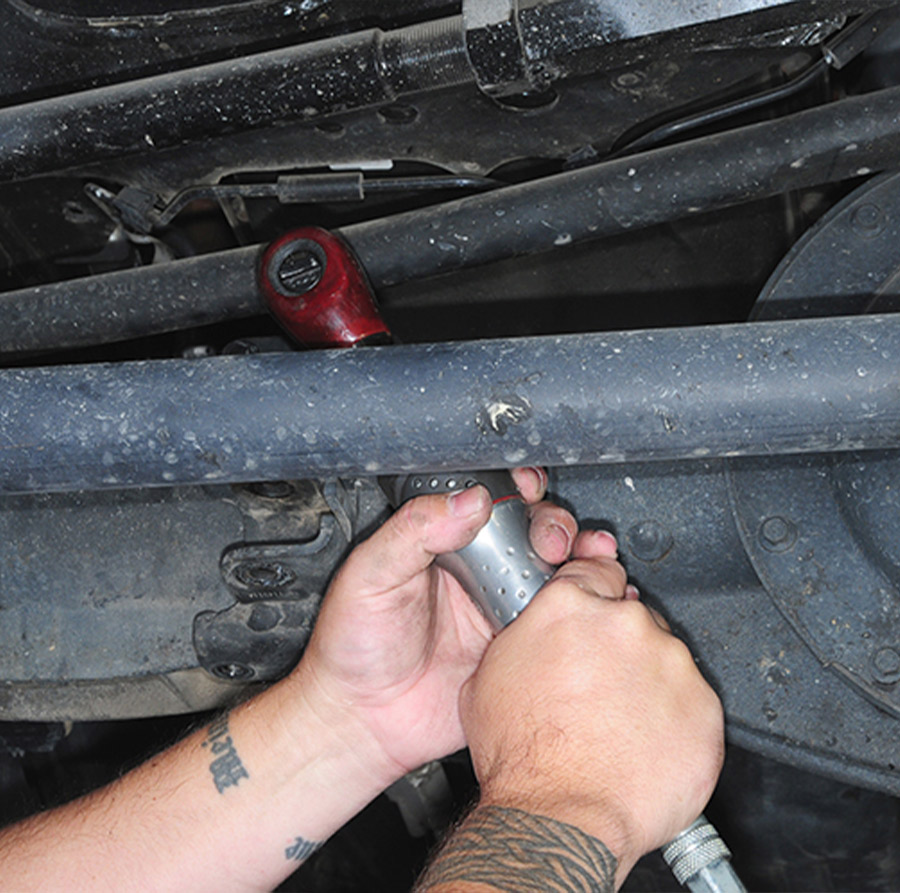
The first step is to remove the old damper. This procedure requires removing the bolt and nut holding the old damper in place in the axle bracket, followed by the same process at the tie-rod bracket; the bolt and nut from the tie rod side are retained for use during installation of the new stabilizer. Next, the bracket is removed from the axle; for the Ram truck, four bolts are pulled out. These bolts have no nuts to contend with, but tool access can be tight, especially when using an impact wrench (which the company discourages unless you have experience using power tools). Once the old bracket is removed, the new one is installed using the original bolts; the bracket matched up perfectly to the factory threads in the axle. Thread sealer is required, and the bolts were torqued to 36 ft.-lb.
The Exact Center can be mounted in either direction. Simply place one end in the axle bracket, pop in the new bolt, add the washer and tighten the locking nut. You’ll do the same for the tie rod bracket but will need to fill the gap with the provided ½-inch washer/spacer. These bolt threads should also be coated with Locktite or a similar product and tightened to 57 ft.-lb. Lastly, tighten the jam nuts on both sides against the ring nuts and straighten the boot. Figure on about an hour for the install if laying on your back.
Chances are you’ll have to make final adjustments after test driving. This is done by loosening the jam nut and rotating the cylinder in slight increments. After the initial test drive the truck was pulling slightly to the left, so the driver’s side jam nut was loosened and the cylinder was rotated upward slightly. You’ll do the opposite if the truck pulls to the right.
On the Road Again
Admittedly, any improvement in steering response and handling will be subjective — but in this case, I had a smile on my face right from the get-go. Steering feel was more precise and reaction time shortened. Rather than working the steering wheel back to center manually, it returned toward center almost by itself. After making the aforementioned adjustment, it got even better.
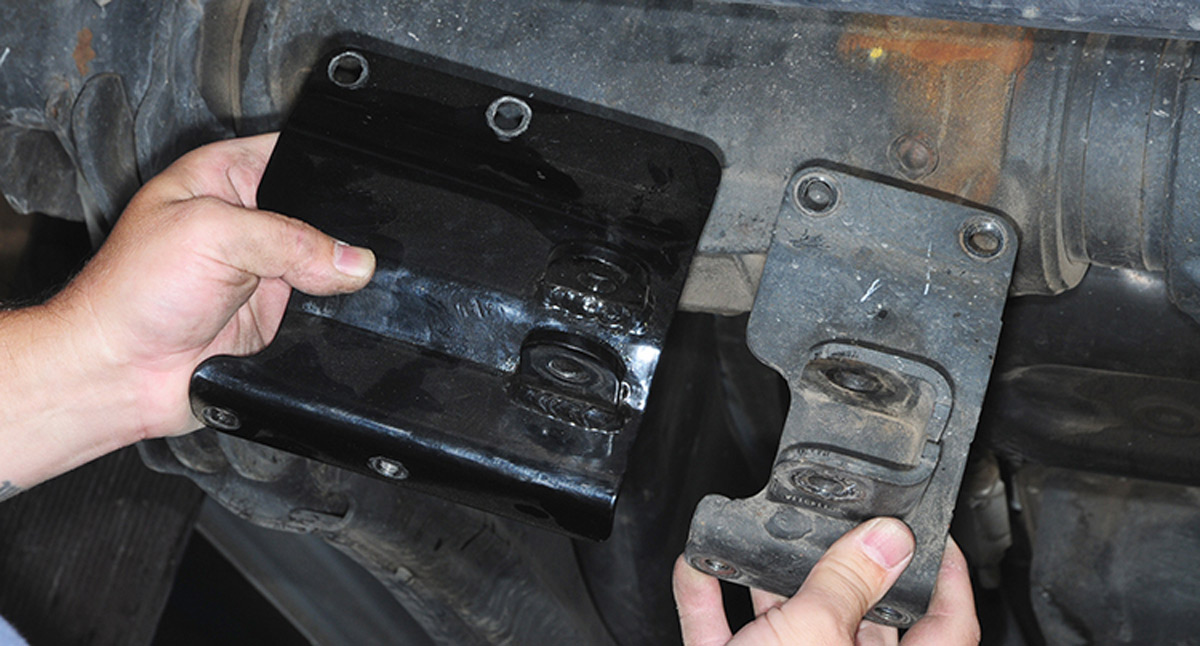
Solo, lane wander virtually disappeared and attacking undulating pavement restored confidence in control. Towing the fifth wheel was even more fun. Steering movement on straightaways was reduced and it was possible to take curving roads at higher speeds with better control. Overall, driver fatigue while towing was virtually eliminated.
Roadmaster claims that’s it’s even possible to back up an Exact Center-outfitted dinghy vehicle while connected to a motorhome. I didn’t get the opportunity to test that claim, but it makes sense that if the front wheels are restricted from turning, backing longer distances (within reason) is entirely possible.
Roadmaster also makes the “sports-car” analogy, which may be somewhat of a stretch — but once you drive with the Exact Center installed on a Ram 3500 dually, you’ll probably forget that you’re driving a beast.
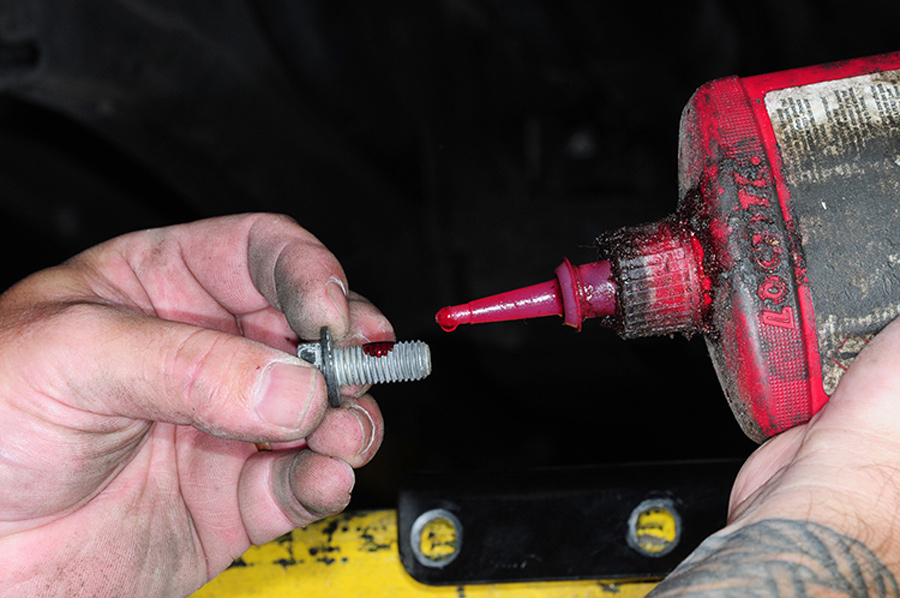
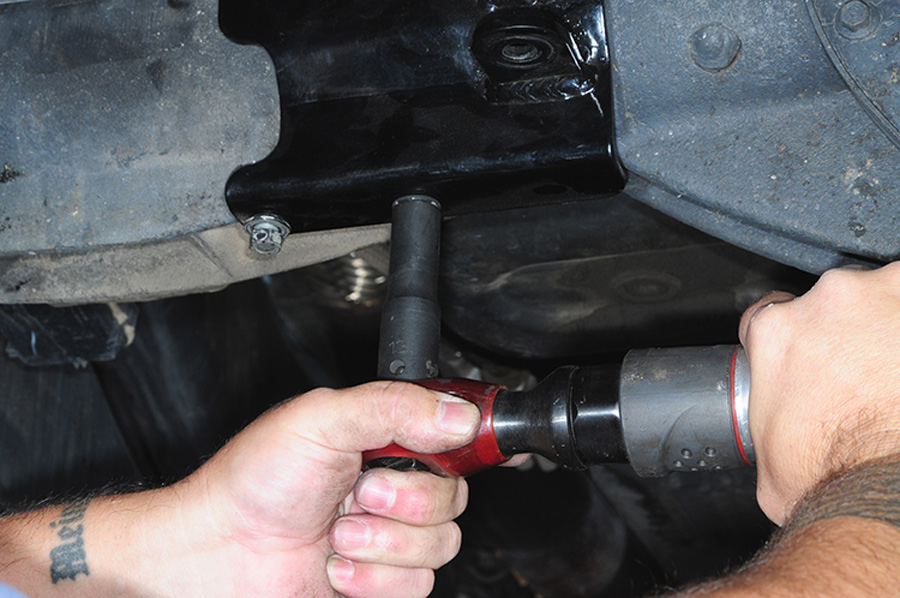
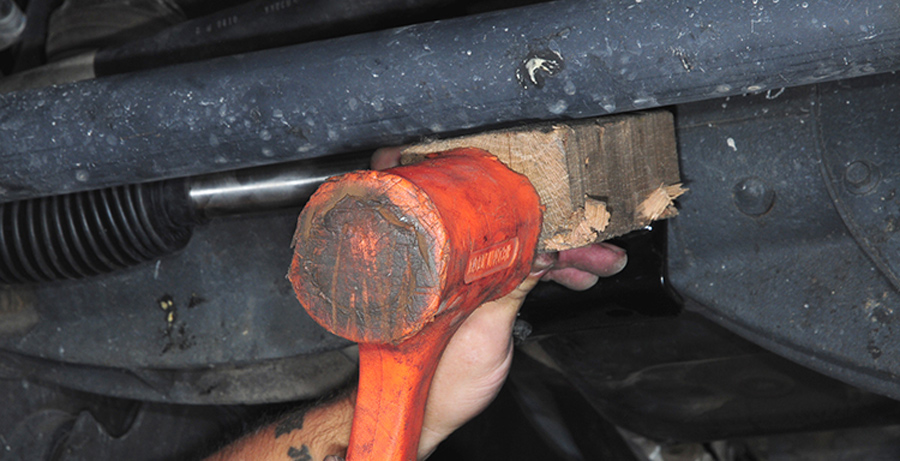
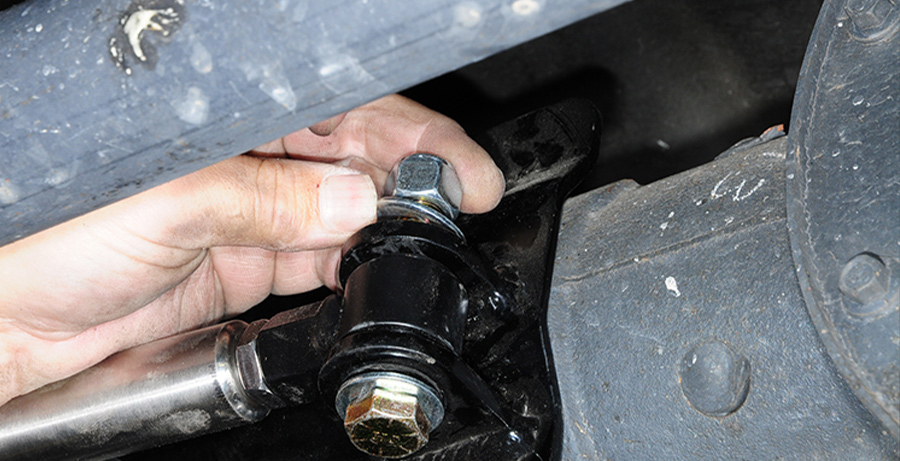
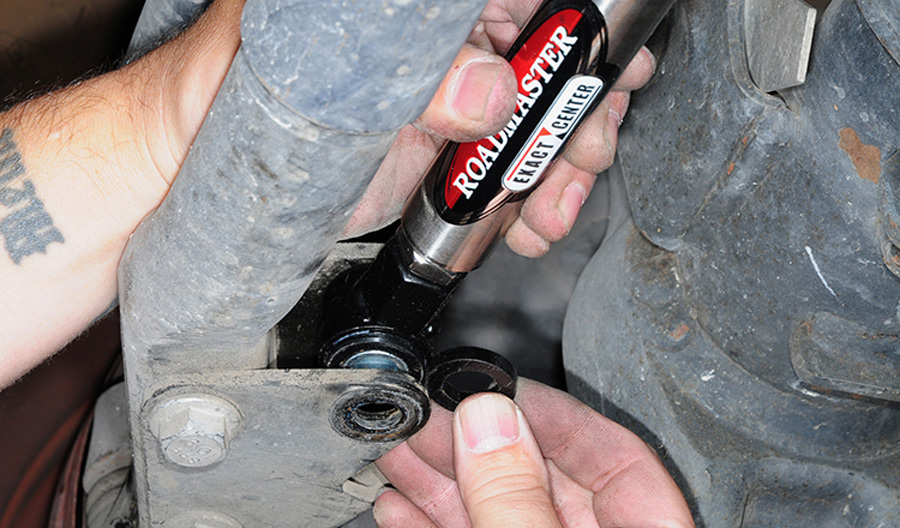
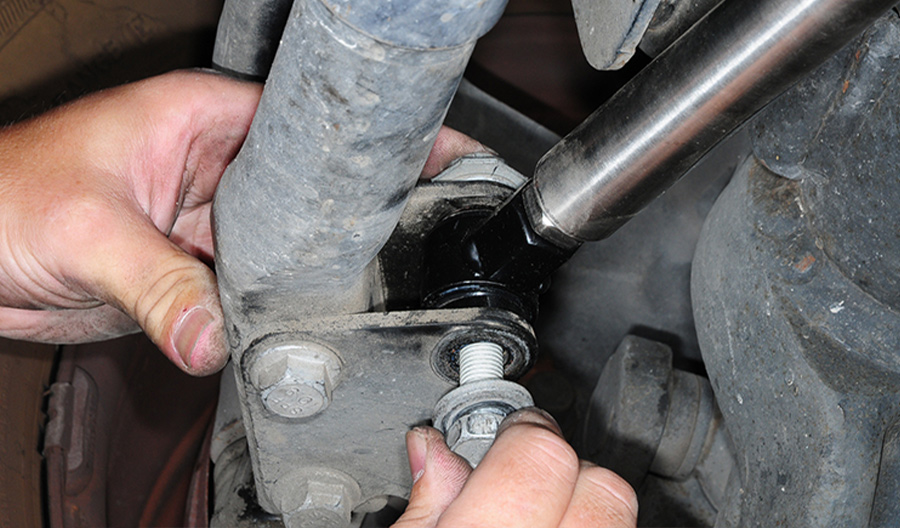
Since the factory tie-rod bracket is a little wider than the Roadmaster replacement, a washer/spacer is provided with the kit to take up the slack. The original bolt, washers and nut are reinstalled in the tie-rod bracket to hold the end of the Exact Center stabilizer in place. This nut and bolt are also torqued to 57 ft.-lb.
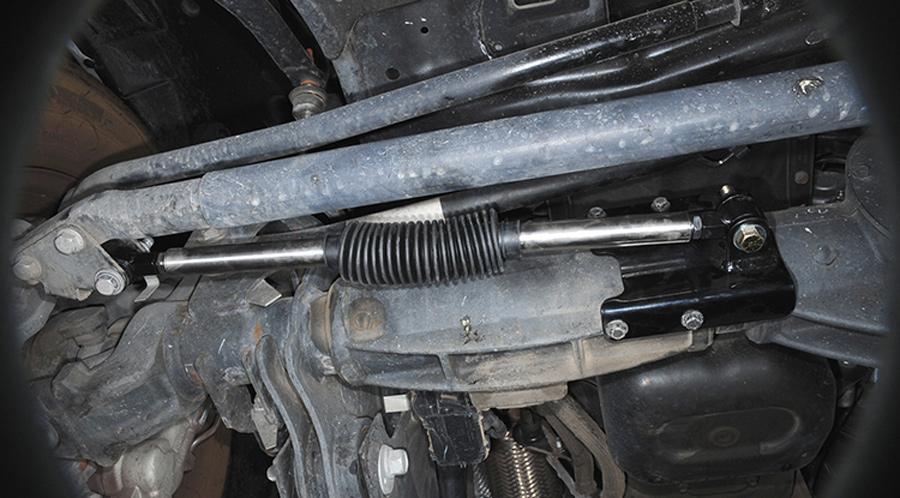
The Exact Center stabilizer can be installed in either direction and is designed to resist steering wander by keeping the system pressurized.
